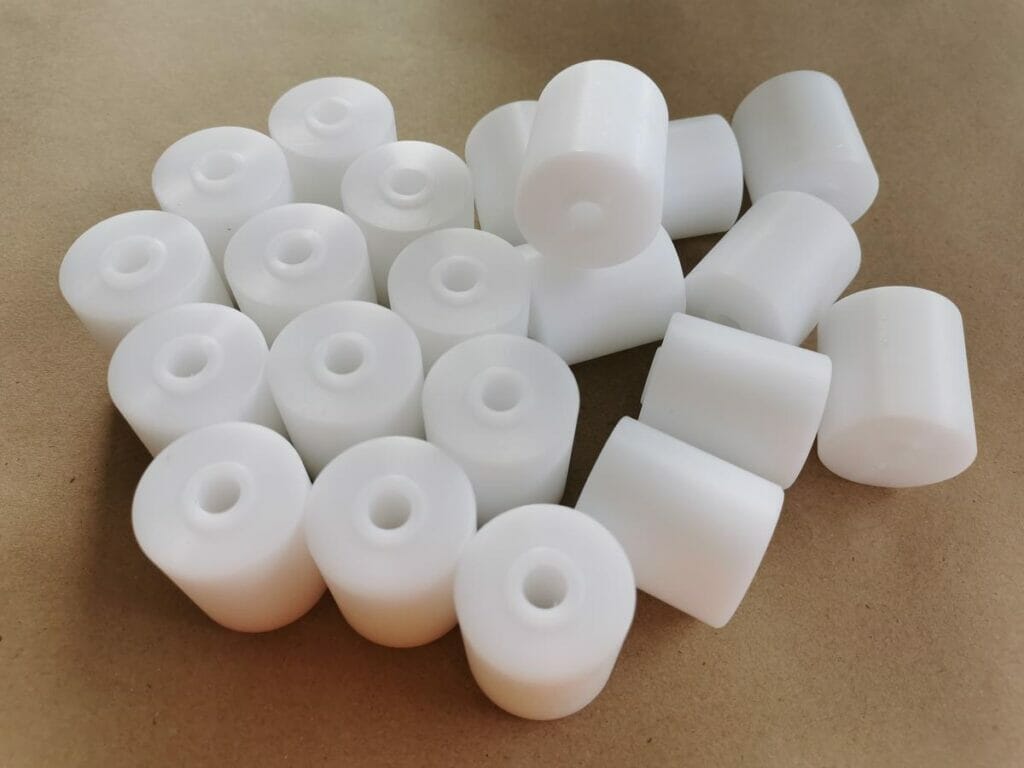Have you ever wondered about the differences between PTFE and silicone? These two materials are commonly used in various applications, but they have distinct properties that set them apart. In this blog post, we’ll explore the unique characteristics of PTFE and silicone, helping you make informed decisions when choosing between them for your specific needs.

Properties and Composition
PTFE (polytetrafluoroethylene) is a fluoropolymer known for its low friction, high thermal stability, and excellent chemical resistance. It is composed of carbon and fluorine atoms.
Silicone is a synthetic polymer made up of silicon, oxygen, and other elements such as carbon and hydrogen. It is known for its flexibility, temperature resistance, and water repellency.
Chemical Resistance
PTFE exhibits exceptional chemical resistance, withstanding most acids, bases, and solvents. It is virtually inert and does not react with most chemicals.
Silicone also demonstrates good chemical resistance, particularly against dilute acids and bases. However, it can be affected by some solvents and concentrated acids.
Thermal Properties
PTFE has a wide operating temperature range, from -200°C to 260°C, making it suitable for high-temperature applications. It also has a high melting point of around 327°C.
Silicone has a broad temperature range as well, typically from -60°C to 250°C, depending on the specific formulation. It remains flexible at low temperatures and stable at high temperatures.
Mechanical Properties
PTFE has a low coefficient of friction, making it an excellent material for reducing wear and friction in moving parts. However, it has relatively low mechanical strength and can be prone to creep under load.
Silicone has good elasticity and can withstand high elongation without breaking. It also has good tear resistance and maintains its mechanical properties over a wide temperature range.
Manufacturing and Handling
PTFE is typically processed through compression molding, sintering, or ram extrusion. It can be challenging to process due to its high melt viscosity and low surface energy.
Silicone can be processed through various methods, including injection molding, extrusion, and casting. It is relatively easy to handle and can be bonded to other materials using adhesives or primers.
Biocompatibility and Food Contact
Both PTFE and silicone are generally considered biocompatible and suitable for food contact applications. PTFE is often used in medical devices and food processing equipment due to its inertness and non-stick properties.
Silicone is commonly used in medical implants, food storage containers, and baking molds because of its stability and resistance to bacterial growth.
Permeability
PTFE has very low permeability to gases and liquids, making it an excellent choice for sealing applications. It is often used in gaskets and O-rings to prevent leakage.
Silicone has relatively high permeability to gases and some liquids compared to other elastomers. This property can be advantageous in applications where breathability is desired, such as in wound dressings or air filtration.
Common Forms and Applications
PTFE is available in various forms, including sheets, rods, tubes, and coatings. It is used in a wide range of applications, such as non-stick cookware, electrical insulation, chemical processing equipment, and bearing surfaces.
Silicone comes in different forms, including solid rubbers, liquid resins, and foams. It finds applications in automotive components, electrical insulation, medical devices, and consumer products like kitchenware and personal care items.
Cost
PTFE is generally more expensive than silicone due to its unique properties and the complexity of its manufacturing process. The cost of PTFE can vary depending on the specific grade and form required for the application.
In conclusion
Both PTFE and silicone have unique properties that make them suitable for various applications. Consider factors such as temperature resistance, chemical compatibility, and friction when choosing between PTFE and silicone. For expert guidance on selecting the right material for your specific needs, consult with a trusted manufacturer or supplier.


